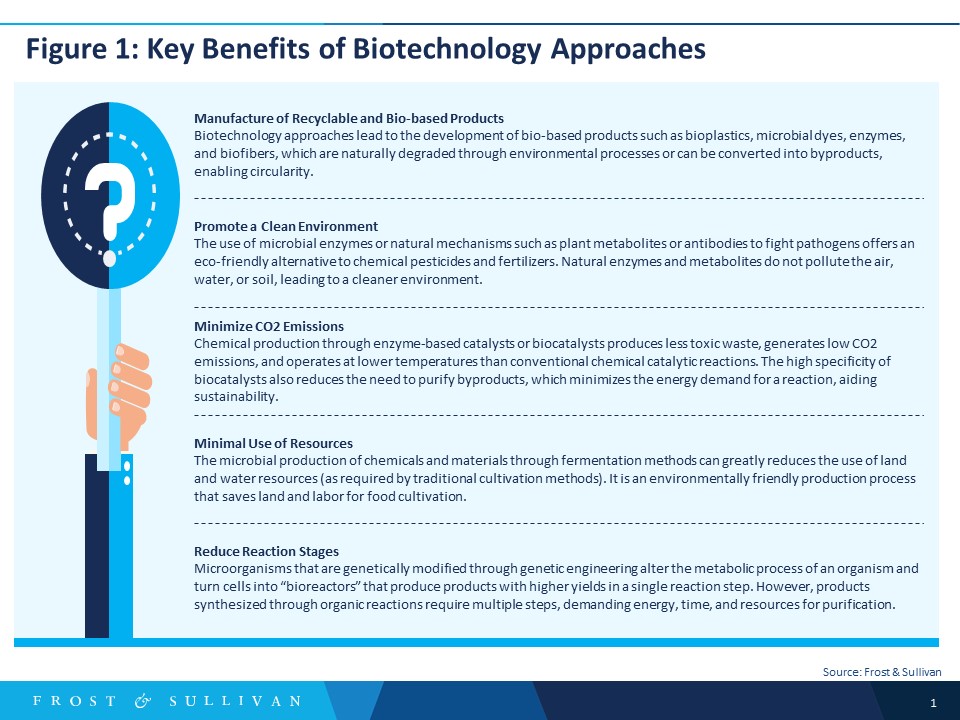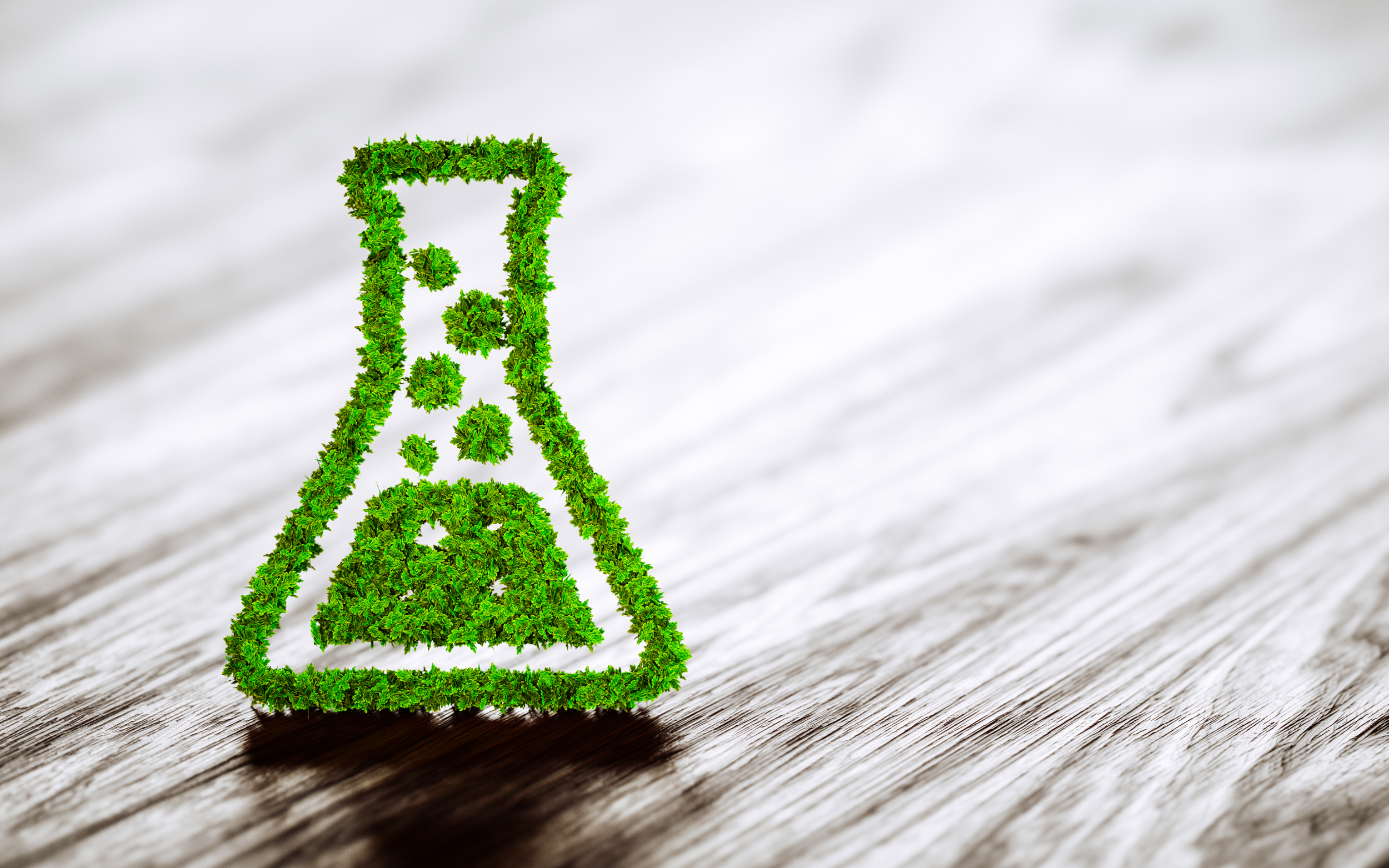The chemical industry is the backbone of several other end-user sectors, including construction, transportation, healthcare, pharmaceuticals, agriculture, and manufacturing. It ranks high in terms of its volumes and turnover and is one of the most regulated industries globally, considering the wide category and subcategory of chemicals and materials produced, each with its own specifications for manufacturing, transport, and storage. This makes the industry value chain extremely complex and intertwined with other industrial supply chains.

In the past three to five years, the manufacture of chemicals and materials, especially those related to petrochemicals, specialty, and fine chemicals, has come under increased focus due to the innovation in the transformation of byproducts and the improving downstream processing for high-specialty chemicals. Sustainability is one of the key trends driving innovation in the industry due to rising consumer awareness and demand for sustainable products and stakeholder efforts toward circularity. Hence, minimizing the environmental impact of chemical processes, production, and procurement has become a primary focus. Decarbonization, recycling, and waste recovery strategies are quickly becoming the norm for the chemicals industry.
In the past two years, digital technologies and biotechnology have seen increasing adoption in the chemicals industry to facilitate sustainability, improve consumer interactions, boost product analytics, and enhance customer experience. While waste management and recycling remain prominent in industrial sustainability, biotechnology is increasingly used to drive sustainability in R&D processes, product development, waste minimization, and energy management, as highlighted in Figure 1.

Key Biotechnology Approaches Driving Sustainability in the Chemicals Industry
The use of biological processes and biotechnological tools in chemical manufacturing encourages sustainability and holds significant global market opportunities. Theoretically, biomanufacturing uses less energy and fewer resources and chemicals for processing and offers lower costs than traditional chemical processes when economies of scale can be achieved. There are generations of biomanufacturing dependent on various methods of production of chemicals and biological molecules.
Biomanufacturing 1.0 involves the production of primary metabolites (butanol, ethanol, acetone, and citric acid), while second- and third-generation biomanufacturing is focused on the development of secondary metabolites and large biomolecules. Biomanufacturing 4.0 is focused on the production and development of engineered cells and tissues. Although several biotechnology strategies exist, computational, molecular biology, and fermentation tools are witnessing high adoption in the chemicals industry to produce high-value chemicals and products. Custom-designed organisms and processes are tested to transform various waste streams into high-value chemicals and intermediates, facilitating the closed production loops and fermentation of carbon, synthesis gas, and byproducts through engineered microbes that are used for chemicals (especially alcohols) manufacture.
Various biotechnological processes can be used to promote sustainability in the chemical industry. These processes can fall under two main categories: process engineering approaches and design engineering approaches.
Process Engineering
Among various process engineering strategies using biotechnological processes, fermentation and biocatalysis are currently the focus. While the chemical transformation is dependent on the biomass used, conversion efficiency, product yield, purity, and by-product formation are based on the biomolecules or microorganisms used. Both technologies have a wide application scope and can be used to convert feedstock into products and in intermediate conversion to specialty chemicals or materials.
Biocatalytic reactions require mild conditions, such as ambient temperature and atmospheric pressure. They are mainly performed in water and do not require toxic organic solvents. They are also renewable and biodegradable, unlike metal and mineral-based catalysts, and are nonhazardous and nontoxic, making them an eco-friendly solution. The use of isolated enzymes as biocatalysts for chemical transformations is an established technology that is being introduced to new generations with molecular and engineering strategies. Whole-cell biocatalysts in biotransformation are emerging due to improved reaction control with free enzymes and a high tolerance capacity related to substrate or product concentration.
To overcome the drawbacks related to specificity in the use of isolated enzymes and the need for cofactors to ensure efficiency in whole-cell biocatalysis and purification processes, a combinatorial design is being researched; this can lead to the need for minimal purification and high product recovery. The synthesis of highly enantioselective enzymes that favor chemical transformations is also underway to expand the range of chemicals that can be synthesized using biocatalytic processes.
Another approach of high interest is the fermentation process, which falls within the umbrella of white biotechnology in which living cells or microorganisms are used to synthesize easily degradable products. The process requires less energy and creates less waste during production compared to conventional manufacturing methods. It serves as a sustainable approach by using renewable feedstocks to manufacture a range of chemicals, including organic acids, alcohols, amino acids, biopolymers, etc., for use in various industries.
Challenges related to the use of batch or fed-batch operations in submerged cultures, leading to product inhibition and complexity involved in the use of bacterial strains in the process, along with the cost involved in optimizing production and downstream processes, are still inhibiting the large-scale use of the technology. To overcome these challenges, research related to the design of genetic constructs for improved process optimization, automation, and digitization of operations is underway. These can help timed product removal and improve process control and downstream optimization.
Design Engineering
Diverse molecular biology, genetic engineering, synthetic biology, and protein engineering tools are used to design and optimize microbial strains to produce various chemicals and intermediates. These engineered strains are intended for large-scale fermentation reactors production of enzymes or biochemicals. Efforts related to the use of precision genetic engineering technologies, such as CRISPR, classical mutagenesis, etc., are being considered to optimize host cell metabolism to maximize product yield and improve process conditions. Microbial host and strain engineering and CRISPR-based tools require fewer raw materials and less energy; hence they can minimize R&D and product development time. Omics and systems biology can aid the design and computational analysis of molecular structures, while customized genetic engineering strategies can help achieve desired product formulation and diversify product portfolios. Synthetic biology tools can be used to engineer microbes for carbon capture and utilization, and their use in chemical synthesis can minimize toxic waste generation.
The use of synthetic biology and genetic engineering are topics that are highly debated, and, as a result, they are highly regulated. Approval and acceptance for the use of modified organisms on a commercial scale are low. Another challenge is that the risks associated with modified organisms and engineered constructs are still a factor, and long-term validation is needed to clearly understand the environmental impact. While advances in gene editing have made it more systematic, leading to higher specificity, efficiency and repeatability, concerns still exist. A robust platform that can be used for various chemical syntheses is needed to increase adoption.
What Next?
The expanding abilities of molecular engineering and computational biology result in the design of purpose-oriented, improved chemicals and materials with desired properties that can cater to specific application requirements. Synthetic biology approaches to produce alternatives for traditional silk, leather, and polymers can minimize the use of natural resources and waste accumulation, resulting in a reduced environmental footprint.
Improved infrastructure for feedstock storage and dedicated R&D for optimizing process engineering methods can augment biotechnology approaches and their impact on promoting sustainability. Care should also be taken to ensure that information about end-of-product life options, ingredients, and composability is verified and made transparent when biotechnological processes are considered for manufacturing chemicals. The development of targeted enzymes and microbial cell factories can streamline production lines and increase the efficiency of recycling processes with minimal environmental impact.
Research efforts to use specific sugars and biomass to produce high-value chemicals are on the rise. Dedicated industrial R&D efforts to utilize and convert indigenous feedstock can maximize cost savings and promote community-level circularity. Improving the efficiency of biotechnological processes and design through techniques and protocols such as enhanced mass and heat transfer; continuous product removal; the use of co-cultures, co-products, and co-substrates; and the development of robust strains through genetic engineering can prove performance over time and aid enhanced chemical transformations. Investing in pilot-scale plants and R&D demonstration plants is also needed to accelerate adoption and reduce time to market for new synthesized chemicals. Optimizing pilot-scale, open-access facilities can also minimize the risk of failure and ensure maximum return on investment.
High demand for sustainable approaches and environment-friendly end-product development comes from investors, regulatory bodies, and consumers.
Authored By: Aarthi Janakiraman, Research Director, TechVision, Frost & Sullivan
Blog received on Mail from Frost and Sullivan
















